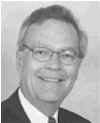|

|
It's
Not My Neighbor's Water
Turning
on the Tap in Virginia
An
odd thing happened during the worst of Virginia’s
drought this fall. The City of Fairfax, which owns
its own water supply system and gets its water from
reservoirs on Goose Creek and Beaverdam in Loudoun
County, initiated voluntary water restrictions. City
officials felt voluntary conservation was prudent.
By
contrast, neighbors on the other side of the city
line, in Fairfax County, obtain their water from
completely different sources. The Fairfax
County Water Authority draws its water from the
Potomac River to serve the northwestern side of the
county and from the Occoquan River to serve the
southeastern side. Unaffected by low water supplies,
county residents were not called upon to conserve.
Commonwealth
residents, especially those in urban areas, are
rarely curious about the source of their tap water.
But the water for those morning showers has to come
from somewhere.
The
state has an estimated 49,350 miles of rivers and
streams divided into nine major water basins – the
Potomac/Shenandoah, Rappahannock, York, James,
Chesapeake Bay/Small Coastal, Chowan River/Albemarle
Sound, Roanoke, New, Tennessee/Big Sandy. Water
supply in the Old Dominion originates in these
watersheds.
According
to a 2003 state report “The Status of Virginia’s
Water Resources,” the top 50 “water
withdrawers” in the commonwealth included Newport
News, Richmond, Norfolk, Fairfax County Water
Authority, Virginia Beach, the Appomattox Water
Authority and Portsmouth in the top half of the
list.
The
main water source for Newport News is a reservoir
system along the Chickahominy River. The Appomattox
Water Authority, which serves the cities of
Petersburg and Colonial Heights, as well as
surrounding counties, gets its water from Lake
Chesdin. Tap water for Virginia Beach residents
travels 90 miles from Lake Gaston on the
Virginia/North Carolina border.
In
fact, Virginia Beach’s water supply is the result
of a 25-year-old “water war,” according to an
article in the Virginian-Pilot (“Water
Supply Helped Virginia Beach to Flourish,”
November 5, 2007). In the early 1980s, Virginia
Beach, with twice the population of Norfolk, had
outgrown the older city’s water system. Norfolk,
concerned about the lack of a reliable source of
water, had placed a moratorium on development.
Alternatives, such as building a lake near
Petersburg or a reservoir in Assamoosick Swamp in
Southhampton County were too expensive. The Virginia
Beach City Council decided to find its own water
source. While there was opposition for many years,
the pipeline, once open, has allowed 14,000 new
homes and businesses to hook up to the city water
system.
While
rain has alleviated drought conditions slightly,
last October, a number of jurisdictions imposed both
voluntary and mandatory water conservation to
safeguard their water supplies. As of mid-November,
the City of Manassas remained under a mandatory
water conservation notice: Lake Manassas had not
returned to its normal levels. Charlottesville also
imposed mandatory water restrictions last August and
published 50
Ways to Save. These include such tips
traditional tips, from running the dishwasher and
washing machine only when full, to more creative
ideas such as developing a compost pile rather than
using a garbage disposal.
When
Virginia’s freshwater streams are replenished, the
total combined flow is estimated at 25 billion
gallons a day. For areas of Virginia still under a
drought warning, that has yet to happen.
Perhaps
Samuel Taylor Coleridge said it best. His ancient
mariner, adrift in the ocean, lamented: “Water,
water everywhere, nor any drop to drink.” Or, the
updated version: “Water, water everywhere, but not
a drop to drink.”
NEXT:
Timing Does Matter: Stoplights in Virginia
--
December 10, 2007
|
|
